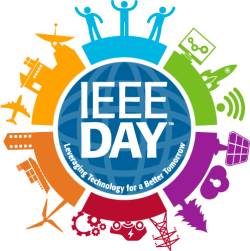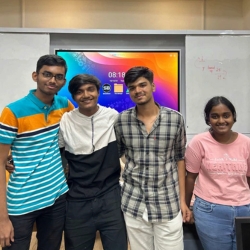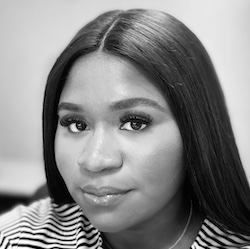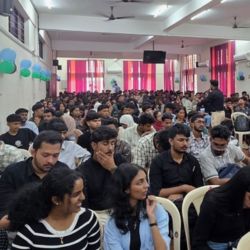Computing’s Top 30: Kiran V K
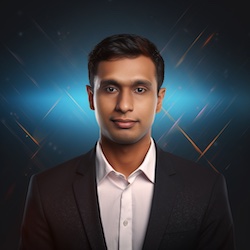
In the academic world, professional life can feel like an endless juggle, and keeping those research, teaching, learning, mentoring, and professional contribution balls airborne all at once can be a taxing challenge.
Kiran V K, however, views these various responsibilities less like a hectic juggle of discrete tasks and more like a flow of integrated experiences.
He discovered these synergies as a graduate student; doing so fueled his exploration of academic and professional activities and led to his receiving an award for the most well-rounded student.
Today, this synergetic perspective continues to fuel his work as an assistant professor at NSS College of Engineering in Palakkad, India, as well as his creation of innovative educational tools using generative AI.
V K is one of Computing’s Top 30 Early Career Professionals for 2024. In the following Q&A, he describes
- How he’s expanded on his early research on simplifying interactions among NoSQL platforms, which allows organizations to leverage different databases and adopt scalable data management solutions
- The 2022 hackathon experience that not only produced a successful project, but also expanded his perspectives and interests in ways that continue to fuel his projects today
- How he approaches content creation for his YouTube channel, which he started during COVID and continues to populate with walkthroughs of technical concepts and solutions
- Details of the educational GPTs he created, which include a Role Model Reflection GPT that analyzes the strengths and weaknesses of well-known people from a human values perspective
You received the Best Paper Award at the EMC2 International Conference in 2013. Can you share the key findings of your paper and its impact on the field of computer science?
My paper, “Generalized Framework for Using Multiple NoSQL Databases,” focused on converting objects to JSON-based serialization format and then using it as a reference to ingest data into multiple NoSQL databases like MongoDB and HBase. At the time this paper was published in 2013, HBase, MongoDB, and similar technologies were essentially different islands of NoSQL databases; there was no unified way to interact with them or use them together.
The key innovation of my work was creating a framework that allowed developers to work with multiple NoSQL databases simultaneously, addressing a significant gap in the industry. As noted, this approach was particularly innovative in 2013 when NoSQL databases were still gaining traction in enterprise environments.
This initial research laid the groundwork for my subsequent work, including “A Schema Generation Approach for Column Oriented NoSQL Data Stores” and “A Novel Method For Dynamic SPARQL Endpoint Generation In NoSQL Databases,” which further expanded on methods to standardize and simplify interactions with various NoSQL platforms.
The impact of this research has been to help organizations leverage the strengths of different NoSQL database types without being locked into a single technology, enabling more flexible and scalable data management solutions.
You were named Best All-Rounder in your ME software engineering program. What were the key factors that contributed to this recognition, and how have they influenced your career?
Enrolling for an ME (PG) degree in software engineering was an entirely new experience for me as I gained access to more experienced faculty, opportunities, and infrastructure comparable to top-notch educational institutes in India. I made it a point to complete my classwork on time so that I could explore all these new available opportunities.
As I explored more of the available facilities, I was called upon by faculty, students, and departments across the institute to share my expertise in cluster computing installations, especially Hadoop and HBase, which I did with joy and enthusiasm.
I maintained an excellent GPA throughout my ME program. Beyond academics, I actively participated in numerous workshops, seminars, and training programs, demonstrating a well-rounded approach to my education.
This recognition significantly influenced my career trajectory, as I immediately secured a position as assistant professor at PSG College of Technology after graduation, followed by my current long-term position at NSS College of Engineering. The balanced approach to academics, research, professional development, and community support that earned me this recognition has remained a cornerstone of my professional philosophy.
Participating in the ETHIndia 2022 Hackathon is a significant achievement. What was the focus of your project, and what were your key takeaways from this experience?
ETHIndia 2022 was a new and enriching experience for me. My team, consisting of myself and three of my students, participated in this three-day event, which was Asia’s Largest Ethereum Hackathon.
Our project, NFT-LOTTERY, was featured in the dynamic NFT track. We developed a system that would draw a lottery and change the features of the winner’s NFT to notify them of their win—similar to the lottery concept shown in the 2024 Hollywood movie Jackpot! The technical implementation involved creating smart contracts for the lottery system and implementing dynamic metadata changes for the NFTs.
Beyond the technical aspects of the project, what fascinated me most were the additional experiences that came with the hackathon: networking opportunities, meeting great minds, and connecting with other like-minded individuals. The presence of numerous Web3 companies at the hackathon reinforced for me that: “There is a place to satisfy everyone’s tastes, and no effort is wasted when fueled by energy and passion.”
This hackathon experience expanded my perspective on blockchain applications and strengthened my interest in Web3 technologies, which has influenced both my research interests and the educational content I create for students.
Can you discuss your experiences at the IBM Generative AI Hackathon in 2024?
I was the point of contact for the IBM Generative AI Hackathon, coordinating the teams from our college with IBM representatives for the hackathon. As the point of contact, I ensured that the students representing the five teams from our college were always updated on the procedures and milestones of the hackathon. The progression was from five initial teams to three teams making it to the final round, with one team ultimately becoming the winning runner-up.
Through proper coordination with IBM representatives, I was able to secure internships for seven students from these teams, providing them with valuable professional opportunities beyond the hackathon itself. This experience highlighted the importance of not just technical skills, but also effective coordination and communication in creating successful outcomes for students in competitive technology events.
The hackathon itself was co-hosted by IBM, the Government of Kerala, KSIDC, CUSAT, Digital University Kerala, and KTU, and ran from 12–28 June 2024. The winning team later presented their innovative solutions at the International GenAI Conclave cohosted by IBM and the Government of Kerala.
You create technical education content on your YouTube channel (KVK_11). How do you approach content creation, and what topics do you find most engaging to share with your audience?
I particularly enjoy demonstrating walkthroughs and solutions to my audience; this passion has informed my approach to technical content creation. The trigger for starting my channel was the 2019 COVID pandemic, which shifted all instruction modes online for a period of 1–2 years.
My approach to content creation involves recording and creating material that will be useful both for myself and for my professional community. Whenever I conduct a workshop or session as a technical expert, I make it a point to create content around it so that both attendees and those who missed the session can benefit in the future.
If you look at my channel, the majority of my newer videos are demonstrations and walkthroughs of technical concepts and solutions. This approach allows me to share practical knowledge that viewers can immediately apply, rather than just theoretical discussions.
As a custom GPT creator for education, can you discuss some of the specialized educational GPTs you have developed and their applications in the educational field?
I’ve developed several specialized educational GPTs to address specific needs in the educational field, including the following.
Role Model Reflection GPT. This GPT accepts the name of a well-known personality and analyzes their strengths and weaknesses from a human values perspective. It then suggests one area for improvement and recommends a person who excels in that area. Finally, it asks the user a self-reflective question on how they can incorporate positive aspects from both of these personalities. I used this GPT during training sessions on universal human values for first-year students as part of their orientation program. Students found it very engaging and useful because they could continue exploring different role models in their personal time and engage in meaningful conversations with the GPT about values and personal growth.
KTU Compre Exam Quizzer for CSE. As part of their BTech program, students in our college must take an objective-type examination based on the core papers from their first two years. Students often find it daunting to revise all the topics at the last moment. I created a GPT that functions as a front-end to query an API I developed, which accesses a bank of previous years’ questions. This allows students to practice with past questions and explore related concepts in depth. It has been one of my most popular GPTs, with more than 500 interactions. I’m planning to release a second version for the upcoming exam season to further benefit students.
Presiding Officer Assistant. Having served as a Presiding Officer for elections in India more than seven times, I’m familiar with the voluminous procedures and manuals that election officers need to understand and implement. To ease this burden and reduce process errors, I created a custom GPT based on the Presiding Officer’s Handbook published by the Election Commission of India. This tool helps first-time election duty personnel quickly find information and understand procedures.
I would like to take this opportunity to invite potential supporters who might fund further development of these educational tools. Currently, ChatGPT on the free tier limits students’ queries after two or three questions. Developing these as separate platforms accessible to all students would greatly enhance their educational value. Interested parties can contact me at kiranvk2011@gmail.com.
Your technical contributions include open-source projects like Lens Protocol/Momoka and IoT innovations in structural monitoring. Can you highlight one of your notable projects and its impact on the industry?
Open-source contributions to Lens Protocol and Momoka. Lens Protocol is a decentralized social graph that enables users to own their content and social connections through NFT-based profiles. Built on Polygon blockchain, it was founded by Stani Kulechov (founder of Aave) in 2022. The protocol allows users to create profiles, post content, follow others, and interact in ways familiar to social media users, but with full ownership of their data.
Momoka is a scaling solution developed specifically for Lens Protocol that processes Polygon transactions off-chain and sends them to data availability layers, enabling speeds comparable to traditional social media solutions like Facebook.
While researching the latest social use cases of Web3, I discovered Lens Protocol and Momoka. To learn more about Momoka, I attempted to run the Momoka verifier locally on my machine, but I encountered issues with the Dockerfile. Docker is a platform that enables developers to package applications into standardized containers using Dockerfiles—configuration files that define how to build these containers, making software consistently deployable across any environment. This is particularly valuable in open-source projects like Momoka, where community members need to run the same code regardless of their local setup.
I fixed the issues in the Dockerfile, and my fix was integrated into the public Momoka repository, simplifying the deployment of the Momoka verifier across different machines.
Reflecting on your career journey, from your education at PSG College of Technology and NSS College of Engineering to your current role as an assistant professor, what are some key lessons you have learned, and how have they shaped your approach to teaching and innovation?
Exploring and assimilating a diverse range of technologies and developments has significantly benefited me. Unlike animals or birds, which often excel as specialists in their specific fields, humans are inherently generalists capable of employing a variety of tools to tackle different tasks. I’ve found that broad exploration and assimilation have enhanced my ability to adapt to the ever-changing dynamics of both professional and social environments. This adaptability mirrors how we have evolved over time, allowing us to thrive in diverse circumstances.
I still pray for an unquenchable thirst and capacity to learn. What began as a child’s nervous petition before exams has evolved into a personal mantra that serves as my compass in navigating today’s rapidly changing world.
My career path has been shaped by continuous learning and adaptation. From my undergraduate studies at NSS College of Engineering to my master’s at PSG College of Technology, and now back at NSS College in a teaching role, each environment has offered unique lessons and challenges.
The technical foundation I built during my education has been essential, but equally important has been developing the ability to communicate complex concepts clearly—a skill that enhances both my teaching and my ability to contribute to collaborative projects.
This philosophy of continuous learning and adaptation has influenced my teaching approach, where I emphasize not just technical knowledge but also the development of versatile problem-solving skills that will serve students well as technologies evolve. I encourage students to become adaptive learners rather than specialists in technologies that may become obsolete.
You have developed augmented reality (AR) learning experiences. Can you discuss a recent AR project you worked on and its potential applications in education or other fields?
I’ve been working with Over the Reality (OTR), an active AR platform that combines augmented reality with blockchain technology. OTR creates a metaverse layer over the physical world, allowing users to place and interact with AR content in real-world locations. Together with my students, we’ve explored various educational applications of this platform, including:
Displaying lab banners and physical equipment virtually. This application enables students to view lab banners and equipment as shown in the physical lab AR experience from the convenience of their homes. This means that the experience they get in the lab at their institute can be carried along with them through this AR experience at home.
A nature-hosted AR art gallery. To foster exploration in metaverse and AR/VR experiences with a sustainability message, I led a group of students to explore setting up a nature-hosted art gallery. In this concept, the art displays and extra props are all AR experiences, avoiding any disturbance to the surrounding environment. We enrolled this project in an OTR venue design contest.
These AR projects have significant potential in education in that they enable immersive learning experiences that transcend physical limitations. Students can access laboratory equipment and environments regardless of their location, making education more accessible and engaging. Additionally, the nature-hosted gallery concept demonstrates how AR can promote environmental awareness while providing rich cultural experiences.
The combination of AR with blockchain technology also introduces students to the emerging field of Web3, preparing them for future technological developments. These projects serve as practical examples of how cutting-edge technologies can be applied to solve real-world problems in education and beyond.
As a leader in various academic and industry initiatives, how do you balance your professional responsibilities with your commitment to community engagement and mentorship?
I don’t see professional responsibilities, community engagement, and mentorship as separate domains. I continually explore various experiences both professionally and personally, forming viewpoints that I share either as content or through experience-sharing sessions. This approach to sharing experiences has built a community around me, and from this community, I’ve had the opportunity to guide many talented individuals on their journeys.
My professional responsibilities as an assistant professor, a Nodal Officer for the DTE-Infosys Springboard Initiative, and various other roles naturally overlap with community engagement when I create educational resources like custom GPTs that benefit both my students and the broader public. Similarly, my mentorship activities with students often lead to collaborative projects that enhance my professional work, such as our joint participation in hackathons and AR development initiatives.
This integrated approach allows me to leverage the synergies between different aspects of my work. For example, when I create a custom GPT for educational purposes, it simultaneously fulfills my professional responsibility to improve educational resources, engages the community by providing a useful tool, and creates opportunities for mentorship as students explore and provide feedback on the tool.
By viewing these areas as interconnected rather than as competing for my time, I’ve been able to create a virtuous cycle where each domain enriches the others, leading to more meaningful contributions in all areas.
Bio: Kiran V K
Kiran V K is an assistant professor of computer science and engineering at NSS College of Engineering, Palakkad, Kerala, India. He has more than 10 years’ experience in academia and holds an ME in software engineering from PSG College of Technology (Anna University) and a BTech in computer engineering from NSS College of Engineering (University of Calicut).
As an education technologist and technical consultant, V K specializes in developing innovative educational tools using generative AI, creating custom GPTs for educational purposes, and contributing to open-source projects. His research interests include NoSQL databases, IoT analytics, cloud computing, and Web3 technologies.
V K has published numerous papers in international journals and conferences, and his work on NoSQL databases earned the Best Paper Award by EMC2 at the International Conference on Cloud and Big Data Analytics in 2013. He was also recognized as Best All-Rounder in his ME software engineering program.
Beyond his academic role, V K serves as the Nodal Officer for the DTE-Infosys Springboard Initiative and has held various other leadership positions including chairperson for APJKTU Centralized Valuation Camp and board member for the University of Calicut. He is also an active member of IEEE, ACM, and ISTE.
In addition to creating technical education content on his YouTube channel, V K contributes to open-source Web3 projects such as Lens Protocol. He is committed to leveraging technology for educational advancement and community engagement.
Dig Deeper
To learn more about V K’s work and research,
- View his work on Google Scholar
- Check out the technical education content on his YouTube channel
- Explore his GPTs—Role Model Reflection GPT, KTU Compre Exam Quizzer for CSE, and Presiding Officer Assistant GPT
- Connect with him on LinkedIn
Over the next few months, Tech News will highlight different Top 30 honorees each week. For a full list, see Computing’s Top 30 Early Career Professionals for 2024.
To read more about how IEEE Computer Society supports our world and its innovative thinkers through funding, education, and activities, check out its other contributions to the computing community.


